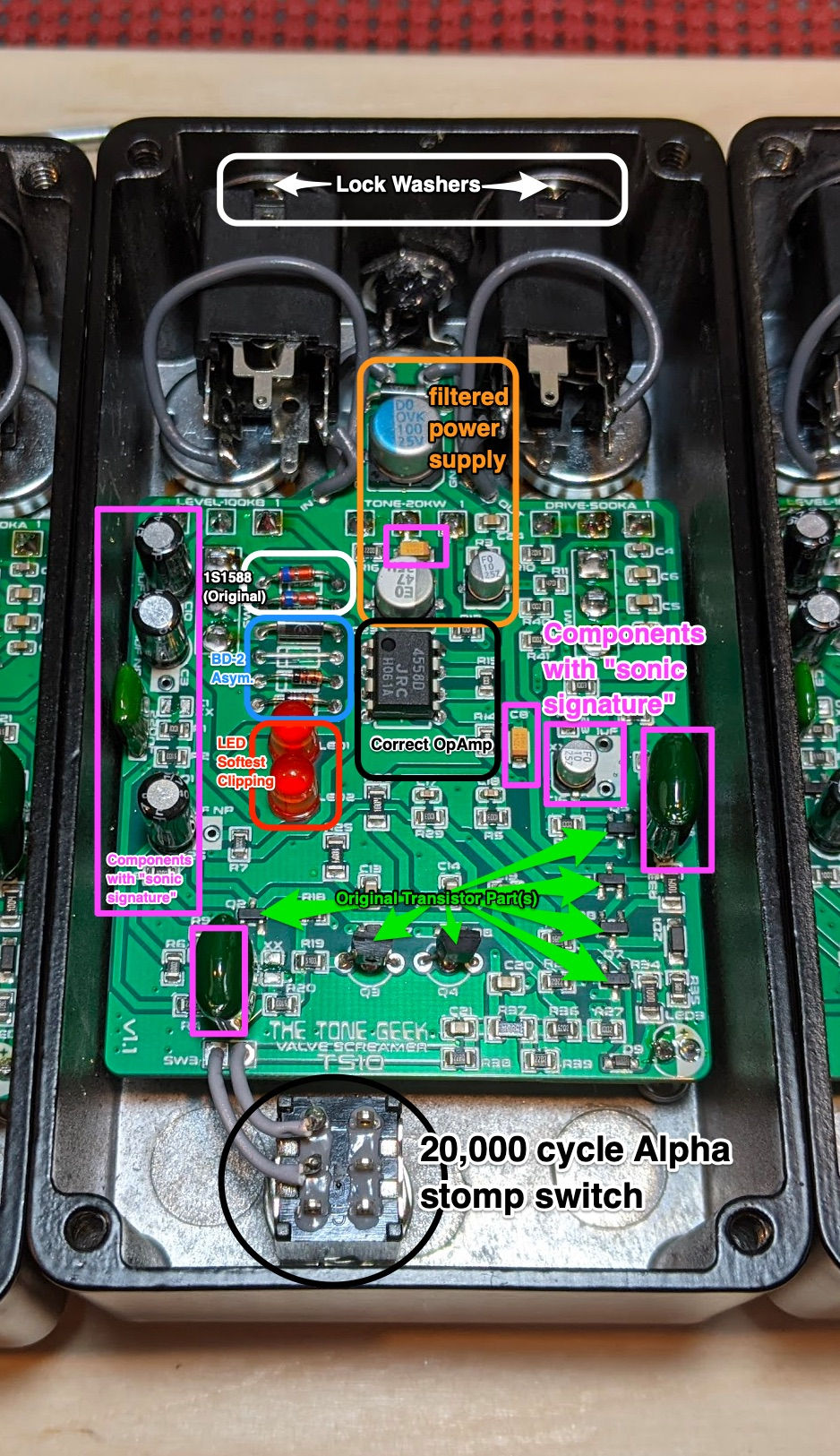Valve Screamer TS10 by The Tone Geek!!! | Join The Waiting List!
- Ryan
- Oct 29, 2020
- 3 min read
Updated: Jul 19, 2021
The waitlist is now closed while my partner, Frog Pedals, fulfills the waitlist orders. Look out for an email from Mark @ Frog Pedals for when it's your turn. I'll update this site accordingly. Thank you all SO MUCH for your support.
Now Serving: Late October - Early November 2020
I've been off and on learning PCB development over the years. I usually get stuck after I created the schematic in Eagle, KiCad, you name it! Once my Steel String Singer #002 project came to a close with some fantastic input from the DIY community (Thank you!) I was ready to start a new venture. While publishing my YouTube videos, I've been often asked "How do I buy something that you made?" and I think I found a solution to the demand!
Making an honest Ibanez TS10 Tube Screamer circuit has been on my radar for a while. Stevie Ray Vaughan, John Mayer, countless others, have used the TS10 version of the Tube Screamer and prices have gone up-up-up lately on eBay and Reverb. The funny thing, to me, is that these pedals are not very reliable based on my own experience as well as other folks. The opportunity I see now is to create a reliable clone of the circuit and add some modifications that can be switched in or left 100% completely stock.
I started out by simply Googling the schematic of a TS10 and I found one that was traced from 1997. I had some trust in the schematic however I couldn't help opening up my personal made-in-Japan TS10 to compare notes. Around this time I started posting on Instagram about my endeavor and Nordvang was kind enough to point out a few issues with the 1997 schematic as well.
After confirming and fixing some errors, I continued to design the PCB using EasyEDA this time. I chose EasdyEDA because it integrated seamlessly with JLCPCB's SMT service.
My goal with this pedal is:
Make it an honest TS10 circuit and add in switchable clipping and bass options.
Carefully chosen components that influence the tonal "signature" of the pedal per the original.
Select highly reliable mechanical components such as jacks, switches, pots, and footswitches.
Keep the buffer and flip-flop circuit per the original.
Utilize the same component type in the signal flow (transistors, capacitors).
Make it easy to scale and manufacture with off-the-shelf parts.
Make room for high-quality WIMA polyester box film capacitors should there be some deviation from selecting the original mylar film.
Any other opportunities to improve without touching the signal at all.
Needs to look cool!
The result:
Implemented a filtered power supply design with a solid polymer reservoir capacitor for the lowest supply noise and long life expectancy. No impact on the supply voltage compared to the original circuit. In fact, the implemented filter design will smooth out the cheapest and noisest power supplies.
1S1588 clipping diode mode just like the original.
LED high headroom clipping mode for fast response and low gain.
Keeley BD-2 style clipping mode for asymmetrical clipping for a tube-like response.
3 bass selection modes for stock, bass+, and bass++.
2SC1815 and 2SK118 transistors per the original as another tonal "signature" influence.
Non-polarized 1uf electrolytic capacitors per the original.
Mylar film capacitors in the signal chain per the original.
High-quality Alpha pots and stomp switch that you can feel click under your foot.
1/4" and power jacks were carefully selected so they hold the plugs in place. This is really important to me when I'm observing pedal "quality".
Standard Hammond 125B size with top jacks.
Combining all these elements together resulted in a pedal that was scientifically proven to match a real TS10 on my scope as well as creating the highest quality and reliable look and feel when interacting with this pedal.

Here is the result of my MIJ TS10 with a JRC 4558 vs my TS10 @ 734Hz mid-hump signature that Tube Screamers are known for. You can see the output waveforms of both pedals are absolutely identical.
For those who are doing the DIY build, here are some extra resources for you.
BOM & Purchasing Suggestions.
https://docs.google.com/spreadsheets/d/12WZ3rwpVl_5uWKOI5eEtPV9L0dlFKPjRrYwNiXeT0ec/edit?usp=sharing
PDF Drill Template (Print 1:1 scale)
Tayda Drill Coordinates



































































ความคิดเห็น